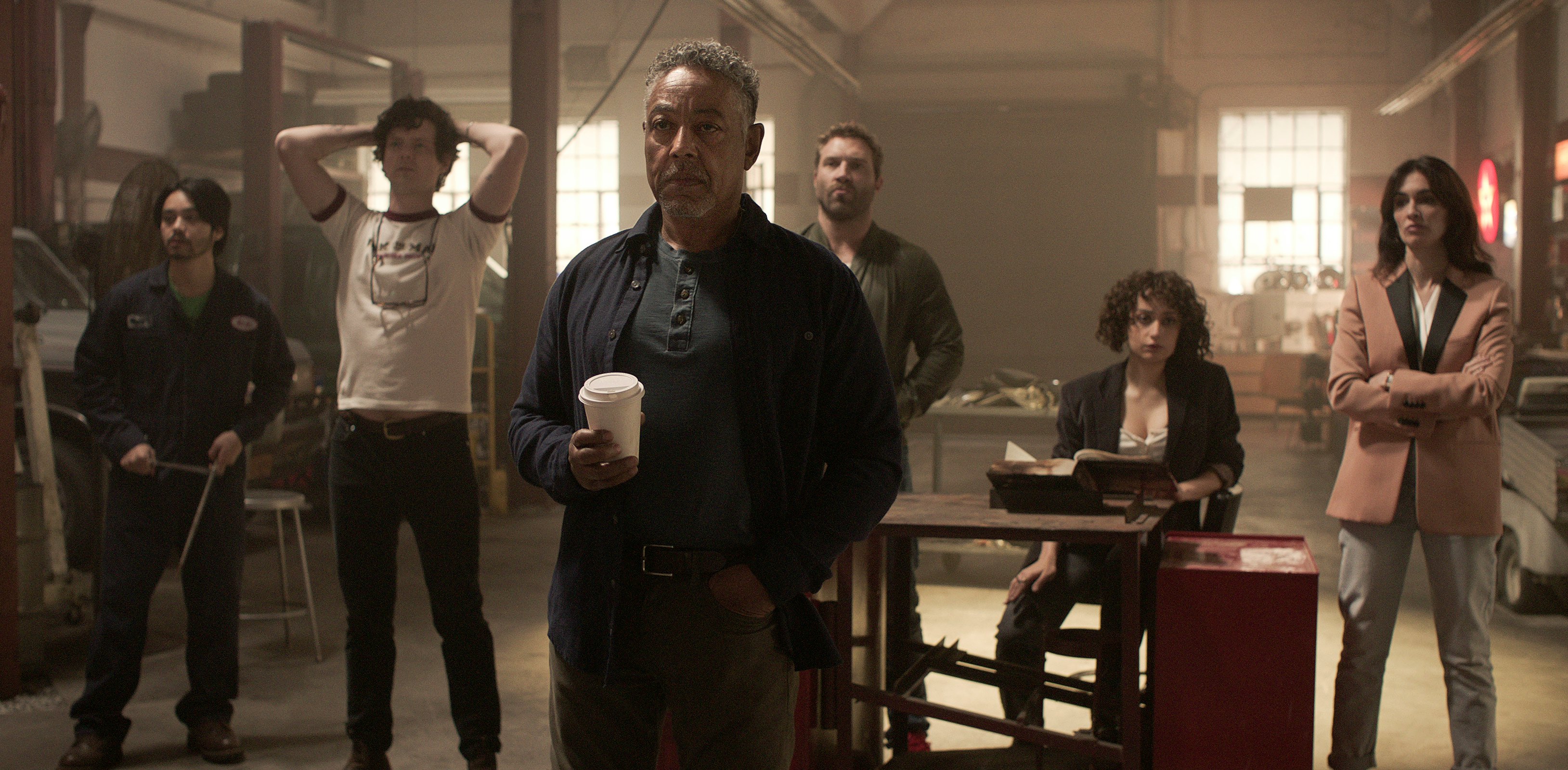
One of the most under-appreciated elements of streaming television is just how tailored the experience can be. From the second you open Netflix, the algorithm suggests a whole row of shows and movies that fit your viewing profile. Even the thumbnail that appears on the screen for each of those suggestions is changed according to your interests.
Kaleidoscope, now streaming on Netflix, takes this personalization one step further with individually randomized episode orders, each telling a different part of a heist story. Inverse asked the stars how it works, and how it could change TV as we know it.
Kaleidoscope is the story of a heist 25 years in the making, and every viewer who selects the show on their screen will watch the first seven episodes in a random order, building up to the gripping finale that shows the actual heist itself. Episodes can’t be numbered, lettered, or given anything to determine an order, so writer and showrunner Eric Garcia gave each episode a color. These colors make up a different “kaleidoscope” for each viewer, leading up to the finale, “White.”
The episodes aren’t just backstories — two of them actually cover events that occur after the heist, meaning the story is truly non-linear. It’s an entirely new way of telling a story, and something that was especially exciting to the cast. “It starts conversations,” Kaleidoscope star Tati Gabrielle tells Inverse. “Everybody will see something in a different light. To me, it offers the opportunity for new and different perspectives and enriches that conversation.” Water cooler conversations will be more than just discussing the ending — they’ll be about the differences in the journey getting to that ending.

But making a non-linear series is more complicated than you think — with seven episodes in a random order, there are over 5,000 possible ways to watch. You basically have to make that many TV shows — and narratives — at once.
Every episode has to serve as an introduction to each character and the struggles they face. It’s clear why the series is listed as an anthology; each episode is a fully formed story that shares characters and a premise with the others.
“It’s harder to execute than just being able to cut things in a different order and feed it to the viewer,” Jai Courtney, who plays Bob Goodwin in Kaleidoscope, tells Inverse. “This show is very carefully, meticulously, designed to operate in this way. There's a lot of attention to detail in how clues will be fed down.”

For Giancarlo Esposito, who plays the heist mastermind and protagonist Leo Pap, Kaleidoscope’s format is both an exciting and daunting prospect. “Netflix has done this in a very interesting, galvanizing way,” he tells Inverse. “I think it's going to force writers to get better at what they do, to think through the whole story at one time, to be able to build all the building blocks that Eric Garcia has done so magnificently in Kaleidoscope.”
Are other television writers up for the challenge? Maybe the real question is whether audiences are ready for such purposefully scattered narratives in an era of TV shows being referred to as “10-hour movies.” Maybe Kaleidoscope will be the only show of its kind, but it’s definitely an excellent example of how its unique structure can be used.
Kaleidoscope is now streaming on Netflix.







